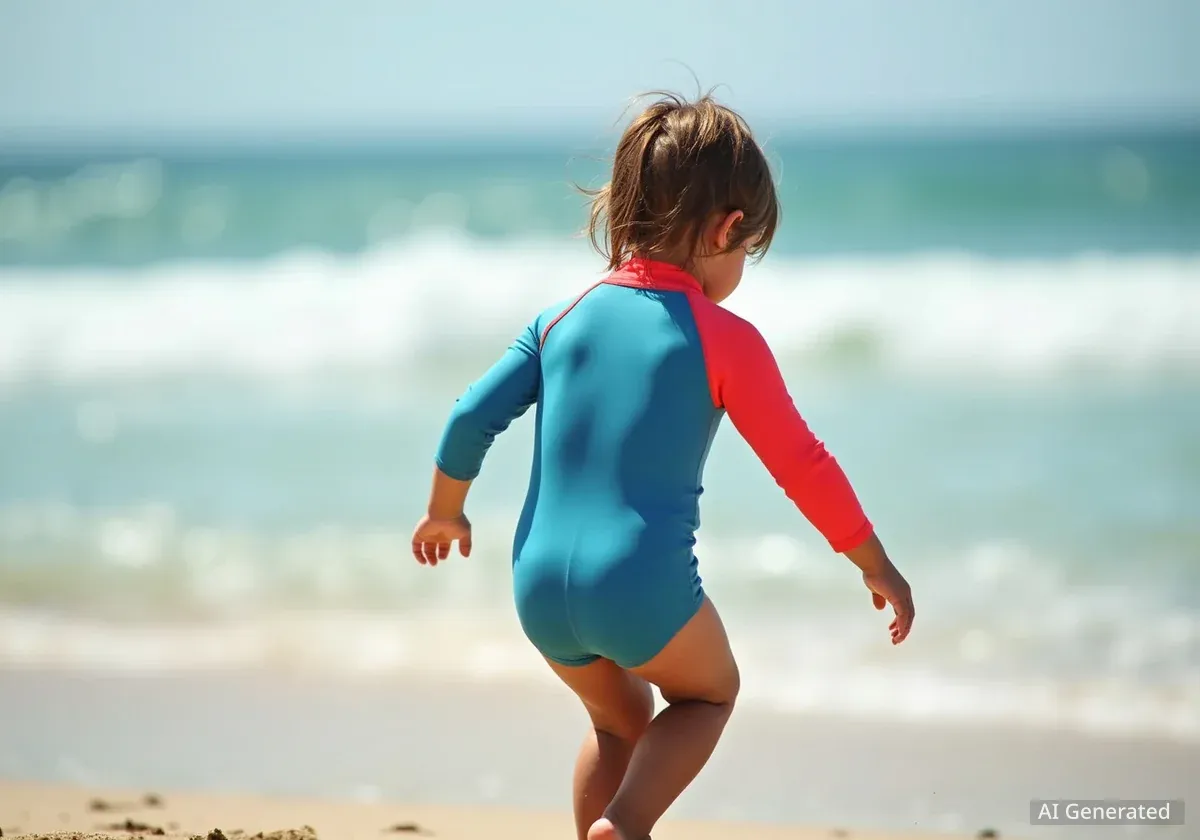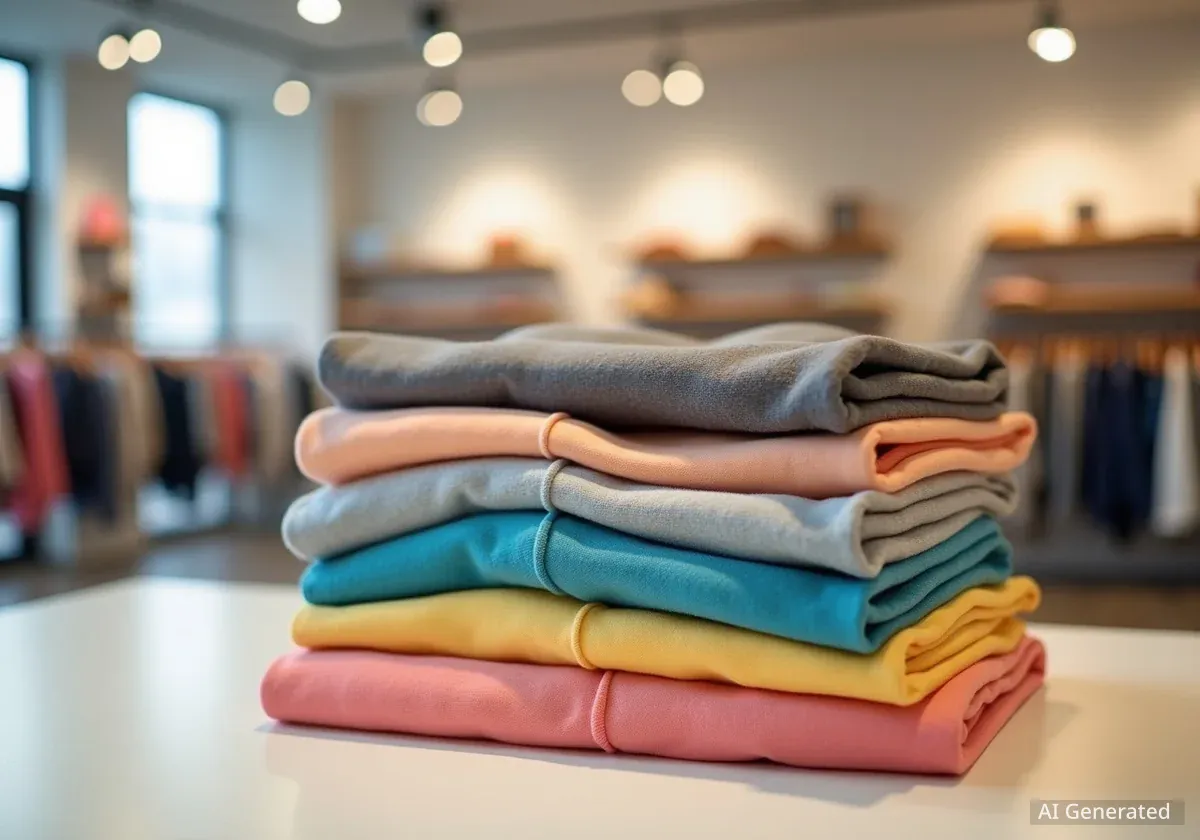As summer approaches, parents are increasingly seeking effective ways to protect children from harmful ultraviolet (UV) radiation. Sun-protective swimwear, particularly rash guards with a high Ultraviolet Protection Factor (UPF) rating, has become a primary tool for ensuring safety during water activities. These garments offer a physical barrier against the sun's rays, reducing the need for constant sunscreen reapplication on covered areas.
A notable example in this category is the ALAZA long-sleeve rash guard, which combines a UPF 50+ rating with design features aimed at maximizing coverage for children. Understanding the material, fit, and protective qualities of such swimwear is essential for making an informed choice for family beach outings and poolside fun.
Key Takeaways
- UPF 50+ Protection: Certified fabric that blocks over 98% of harmful UVA and UVB rays, providing a sun protection equivalent to SPF 50+ sunscreen on covered skin.
- Full Coverage Design: Features like long sleeves and a stand-up collar are critical for protecting sensitive areas like the arms, neck, and chest.
- Material Blend: A composition of 86% polyester and 14% spandex offers a balance of durability, flexibility, and quick-drying properties suitable for active children.
- Sizing for Effectiveness: Correct sizing based on a child's height ensures the garment fits properly without being too restrictive or loose, maintaining its protective qualities.
Understanding UPF Ratings in Swimwear
When selecting sun-protective clothing, the UPF rating is the most important factor to consider. Unlike SPF (Sun Protection Factor), which measures protection from UVB rays in sunscreens, UPF measures the amount of both UVA and UVB radiation that penetrates a fabric and reaches the skin.
A garment with a UPF 50+ rating allows only 1/50th, or approximately 2%, of UV radiation to pass through it. According to the Skin Cancer Foundation, a UPF rating of 30 to 49 offers very good protection, while a rating of 50 or higher is considered excellent. This level of protection is consistent whether the fabric is wet or dry, which is a significant advantage for swimwear.
What Does UPF 50+ Mean?
A UPF 50+ rating is the highest possible certification for sun-protective fabric. It signifies that the material blocks at least 98% of UV radiation, drastically reducing sun exposure for the skin underneath the garment.
Key Design Features for Maximum Sun Safety
Beyond the fabric's UPF rating, the physical design of a swimsuit plays a crucial role in its overall protective capability. Garments designed for maximum sun safety incorporate specific features to minimize exposed skin.
Full-Length Sleeves and High Collars
Long sleeves are a primary feature of protective rash guards, shielding the entire length of the arms, which are often exposed to direct sunlight for extended periods. The ALAZA girls' swimsuit incorporates full-length sleeves to provide this comprehensive coverage.
Additionally, a small stand-up collar helps protect the sensitive skin on the back of the neck, an area easily missed during sunscreen application. This design element ensures that the upper chest and neck are shielded from direct overhead sun, further enhancing the garment's protective function.
Convenient and Secure Closures
A front zipper closure is a common feature in one-piece rash guards, making it easier for children to put on and take off the swimsuit, even when wet. A well-designed zipper, often with a protective flap at the top, prevents chafing against the skin and ensures a secure fit throughout a day of activity.
Material Composition and Performance
The choice of fabric is critical not only for sun protection but also for comfort and durability. Modern swimwear utilizes synthetic blends that are engineered for performance in and out of the water.
Polyester and Spandex Blend
The ALAZA rash guard is made from a blend of 86% polyester and 14% spandex. This combination is popular in activewear for several reasons:
- Polyester: Provides durability, resistance to chlorine and sunlight, and holds its shape well. Its fibers are tightly woven, which contributes to a high UPF rating.
- Spandex: Also known as elastane, this fiber provides significant stretch and flexibility, allowing for a full range of motion without restricting movement. It ensures the swimsuit fits snugly but comfortably.
This material blend is also lightweight and breathable, helping to keep the body cool in warm weather. Its quick-drying nature is a practical benefit, as it reduces the time a child spends in a cold, wet garment after leaving the water, enhancing overall comfort.
Care and Maintenance
To maintain the integrity and protective qualities of UPF swimwear, proper care is important. Most garments, including this model, are designed for easy maintenance. The recommended care instructions are a cold water wash, either by hand or in a machine on a gentle cycle. This helps preserve the fabric's elasticity and the effectiveness of the UPF treatment over time.
Sizing and Fit for Children
A proper fit is essential for both comfort and the effectiveness of a rash guard. A suit that is too tight can be uncomfortable and may overstretch the fabric, potentially reducing its UPF protection. A suit that is too loose can sag when wet and get in the way during swimming.
Manufacturers typically provide detailed sizing charts based on height and age. For the ALAZA model, the sizing is structured as follows:
- Size 3T: For heights of 37 to 41.3 inches
- Size 4T: For heights of 41.3 to 45.3 inches
- Size 5-6 Years: For heights of 45.3 to 49.2 inches
- Size 7-8 Years: For heights of 49.2 to 53.1 inches
- Size 9-10 Years: For heights of 53.1 to 57.1 inches
- Size 11-12 Years: For heights of 57.1 to 61 inches
Consulting these height-based measurements rather than relying solely on age can lead to a more accurate and comfortable fit, ensuring the child is protected and can move freely during water sports and play.
Versatility for Water Activities
While sun protection is the primary goal, modern rash guards are also designed for versatility across various water-based activities. The flexible and durable material makes them suitable for more than just swimming.
They are ideal for sports such as paddle boarding, kayaking, sailing, and fishing, where prolonged sun exposure is a concern. The full coverage and secure fit ensure the garment stays in place during dynamic movements, providing consistent protection and comfort for any activity on or near the water.





